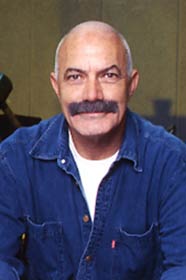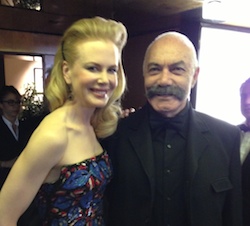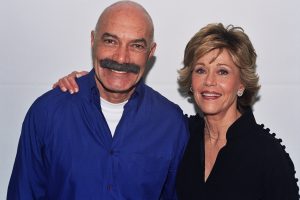Tinker, Tailor, Soldier, Spy: Interview with Tim Bevan co-chair of Working Title Films.
Based on the classic novel of the same name, the international thriller is set at the height of the Cold War years of the mid-20th Century. George Smiley (Gary Oldman), a disgraced British spy, is rehired in secret by his government – which fears that the British Secret Intelligence Service, a.k.a. MI-6, has been compromised by a double agent working for the Soviets. Opens i Dec 9, 2011 to a limited release.
Trailer: http://www.emanuellevy.com/?attachment_id=47402
Now is the Time
Screenwriter Peter Morgan suggested a potential film adaptation of Tinker Tailor Soldier Spy. Tim Bevan, co-chair of Working Title Films, one of the world’s leading film production companies, felt that – to quote Smiley – “now is the time.”
Bevan explains, “20 years on from the Berlin Wall coming down, it’s a very different world, and I felt that doing a film about the Cold War with the benefit of hindsight would be quite an interesting idea, particularly when I saw [the Oscar-winning foreign film] The Lives of Others. I thought, why not make an English-language thriller on the topic, entailing who the enemy was then, and what the context was.
“Once Peter mentioned the book, I well remembered it as John le Carré’s seminal work and the definitive Cold War story. So I approached him personally.”
The author took to the idea. “He was quite enthused,” notes Bevan, who promptly began prepping the feature with his Working Title co-chair Eric Fellner and then recruited producer Robyn Slovo, who had teamed with company before. “The book had been very successfully adapted for television [as a 1979 U.K. miniseries] with Sir Alec Guinness playing Smiley. That was a highly esteemed production, and it was therefore quite brave of le Carré to give us his blessing. It had been a long time since the miniseries, and we were setting out to make it for a contemporary audience.
“I also think he realized that he could open himself up to a whole new audience – certainly, a younger one. The appreciation and acknowledgment of his work is increasing.”
Adapting Books to Films
Working Title has long worked with authors, “treating them with an enormous amount of respect,” reminds Bevan. “We’ve adapted a number of books into movies over the years.”
The Story
“The story, at its core, is a whodunit,” says Bevan. “Who is the double agent? But that core spirals into helixes, and the story moves through a couple of different periods of time. Make it too simple, and you under-represent the story’s complexities. But make it too complicated, and you distance everybody. It’s been a real balancing act.
“What’s as relevant now as it was thirty-odd years ago, and will be in a hundred years’ time, is how people betray one another’s trust.”
Considering Directors
While considering directors for the movie, Tim Bevan fielded a phone call from Tomas Alfredson, the Swedish filmmaker who had caught the world film community’s attention with his striking and empathetic feature Let the Right One In. Alfredson had heard that Working Title would be making Tinker, Tailor, Soldier, Spy, and so he initiated contact. A meeting was arranged. Bevan remembers, “I was expecting some trendy young Swede to come through the door. But this very big man, about my age, came in and he was quite quiet.
“I asked for his take on the material. He said, ‘Well, I think that all of the muscle bound guys, they go and they join the army. And the nerds, they are the spies.’ I thought, ‘Now, there’s an angle…’”
Bevan adds, “We were looking for a directorial vision from a confident filmmaker to firmly guide the audience through the narrative of this complex story. Tomas was a bit of an unlikely candidate, but le Carré saw Let the Right One In and said, ‘Go with him.’
Period Films
“The thing about period films is that the only thing ‘period’ about them should be the look. This allows for the viewer to have more of an emotional response. The director must create a world to journey through with the audience. These approaches characterized Tomas’ work on Let the Right One In, and now would again on Tinker, Tailor, Soldier, Spy.”
The Script
Staying faithful to the period when it was written and published, the feature unfolds primarily in 1973 (progressing into 1974). Bevan adds, “The team’s script represented the book, retained the complications of the book, and had integrity at its heart. As a producer, you’re always looking for a compelling story, compelling emotion, and compelling characters. Their script had those elements, and it is very much their script that was shot.”










